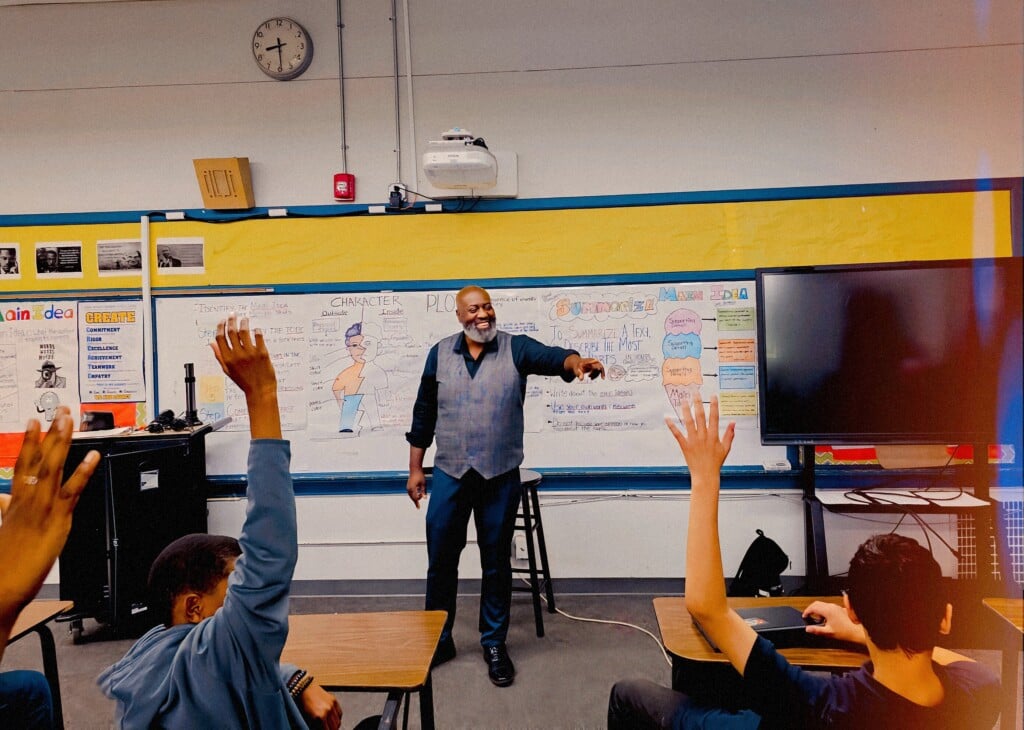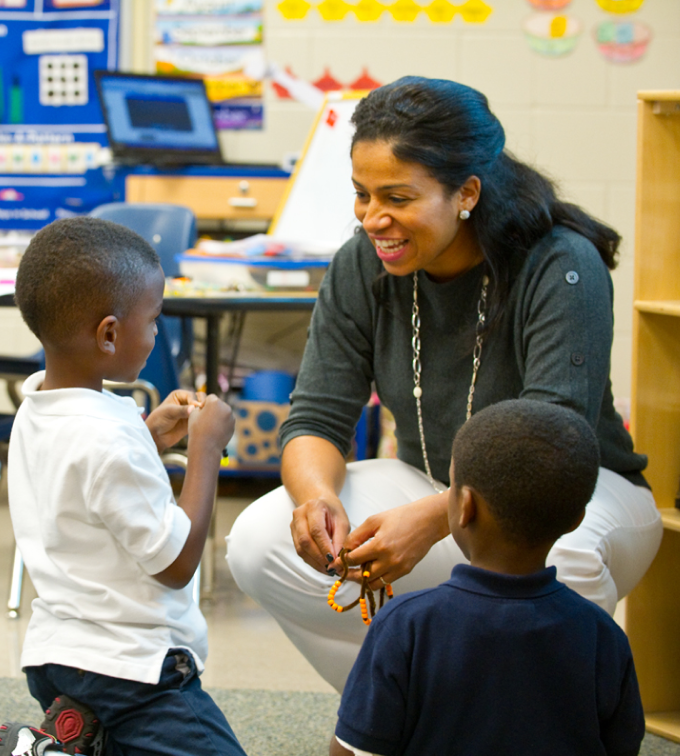The Best Primary Science Tuition Singapore for Effective Learning Methods
The Best Primary Science Tuition Singapore for Effective Learning Methods
Blog Article
Exploring the Various Training Techniques in Main Scientific Research Education And Learning Today
The landscape of main science education and learning is progressing, with different training methods obtaining importance in modern classrooms. Inquiry-based learning, hands-on experiments, and the integration of modern technology are redefining just how educators involve young minds. Additionally, collective methods and set apart guideline are being utilized to provide to the diverse needs of students, boosting both involvement and understanding. As we analyze these approaches, concerns occur regarding their efficiency and the effects for future educational techniques. What might these changes in strategy mean for the future generation of learners?
Inquiry-Based Discovering
Inquiry-Based Understanding (IBL) is an instructional technique that urges students to discover clinical ideas with wondering about, investigation, and hands-on testing. This technique highlights the duty of trainees as active participants in their discovering, advertising important thinking and analytical skills. By engaging with real-world inquiries, trainees end up being interested and motivated, which improves their understanding of scientific concepts.
In IBL, educators work as facilitators, directing pupils as they navigate their questions instead than delivering details directly. This student-centered technique enables for distinction, accommodating different finding out paces and designs. Trainees create abilities in formulating theories, developing experiments, and assessing information, which are important for scientific literacy.
Additionally, IBL promotes collaboration amongst students, urging them to share ideas and searchings for. This collective questions advertises social skills and a feeling of neighborhood within the classroom. The procedure of questions encourages resilience, as students learn to accept failing as a stepping rock towards understanding.
Hands-On Experiments
Hands-on experiments are an important component of reliable scientific research education, matching the principles of inquiry-based learning. These experiments enable students to engage straight with clinical ideas, cultivating a deeper understanding through experiential understanding. By controling materials and observing end results, young learners can understand abstract theories in concrete ways.
Such tasks advertise crucial reasoning and analytic abilities, as pupils hypothesize end results, conduct experiments, and assess outcomes. This procedure urges them to ask questions, improve their understanding, and develop a clinical way of thinking. Furthermore, hands-on experiments can be customized to diverse understanding styles, making sure that all students have the chance to involve meaningfully with the material.
In addition, hands-on experiments frequently encourage cooperation among peers, advertising synergy and communication abilities. Operating in teams allows pupils to share ideas, review searchings for, and discover from each other, which boosts their total instructional experience.
Incorporating hands-on experiments into the main science curriculum not only enriches the finding out environment yet likewise grows a lifelong rate of interest in scientific research. By proactively joining their education, students are more probable to create an interest for clinical questions that expands past the classroom.
:max_bytes(150000):strip_icc()/GettyImages-1475870499-b4c3034fc17f494ea9aba128e6140d6e.jpg)
Technology Integration
Incorporating technology right into main scientific research education and learning has actually come to be increasingly necessary in cultivating trainee involvement and improving discovering end results. Using digital tools, such as interactive simulations, online laboratories, and instructional software program, offers students with possibilities to discover clinical ideas in ingenious methods. These resources facilitate Get More Information a much deeper understanding of intricate topics by enabling learners to envision and control variables that would be not practical in a typical classroom setting.
In addition, modern technology assimilation encourages personalized learning experiences. Pupils can proceed at their very own rate, reviewing challenging principles via multimedia resources, which satisfy various understanding designs. This adaptability not just sustains individual growth but likewise grows a feeling of autonomy in learners.
Furthermore, technology works as a bridge to real-world science, linking students with existing research and specialist contributions. Access to online data sources and scientific journals widens trainees' perspectives on scientific questions and cultivates important believing abilities.
Collaborative Learning
Collective understanding plays an important duty in primary scientific research education and learning by promoting synergy and communication skills among students. This approach urges learners to function together, share understanding, and participate in problem-solving, which improves their understanding of clinical concepts. By taking part in team tasks, pupils learn to express their ideas, listen to varied perspectives, and discuss options, all of which are essential abilities in both scholastic and real-world contexts.

Study suggests that collective understanding can bring about raised inspiration and interaction in science subjects, as pupils discover satisfaction in common experiences (primary science tuition Singapore). In addition, this approach prepares blog pupils for future collaborative endeavors, outfitting them with the abilities required for reliable team effort in college and specialist environments. Inevitably, embracing joint learning in key scientific research education can substantially improve the knowing experience and advertise a much deeper understanding of scientific questions
Separated Direction

Separated instruction can show up in different methods, such as varying the content, procedures, or products of knowing. Instructors may utilize tiered tasks that give differing levels of intricacy, permitting trainees to work at their particular preparedness degrees. Furthermore, versatile organizing techniques can help with cooperation amongst trainees with various capacities, cultivating peer discovering.
Analysis plays a critical role in this technique, as it informs direction and assists instructors recognize each pupil's special needs. Formative assessments, such as monitorings and tests, can direct instructors in adjusting their strategies to boost finding out outcomes. primary science tuition Singapore. Inevitably, by carrying out separated direction in primary science education, educators can cultivate a more reliable and equitable discovering setting, encouraging all students to reach their full possibility in recognizing scientific sensations
Verdict
In summary, the diverse training strategies in main science education and learning, consisting of inquiry-based discovering, hands-on experiments, modern technology combination, collaborative knowing, and set apart direction, jointly add to a much more effective discovering environment. These techniques advertise crucial reasoning, analytical abilities, and a deeper understanding of clinical ideas. By executing these approaches, instructors can develop supportive and appealing class that deal with the different requirements of trainees, eventually cultivating a go to this website lifelong passion in scientific research and improving academic achievement.
Inquiry-Based Learning (IBL) is a pedagogical method that motivates trainees to explore scientific principles via questioning, investigation, and hands-on trial and error.Joint understanding plays a crucial duty in primary scientific research education by fostering synergy and interaction abilities amongst pupils.Study suggests that joint discovering can lead to boosted motivation and engagement in scientific research subjects, as trainees discover satisfaction in shared experiences.In cultivating a comprehensive knowing environment, separated direction emerges as a vital approach to fit the diverse demands and abilities of pupils in primary science education and learning. Inevitably, by applying distinguished instruction in key scientific research education and learning, educators can cultivate an extra reliable and fair discovering setting, empowering all pupils to reach their full potential in recognizing clinical sensations.
Report this page